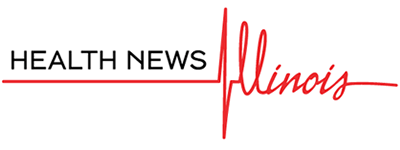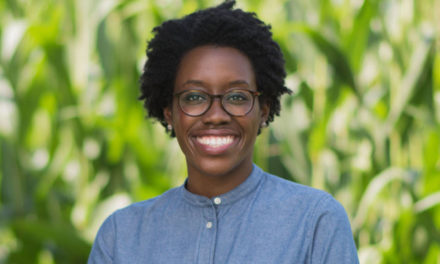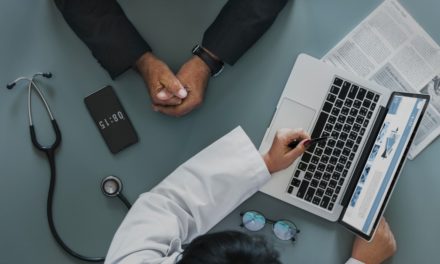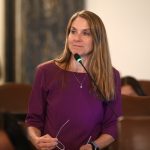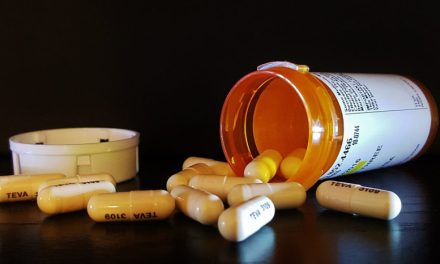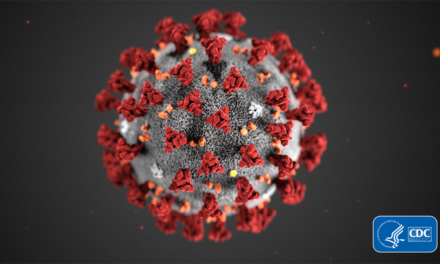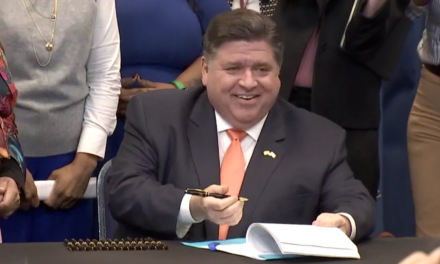
OSF HealthCare, UIC partner to address health challenges in urban communities of Chicago
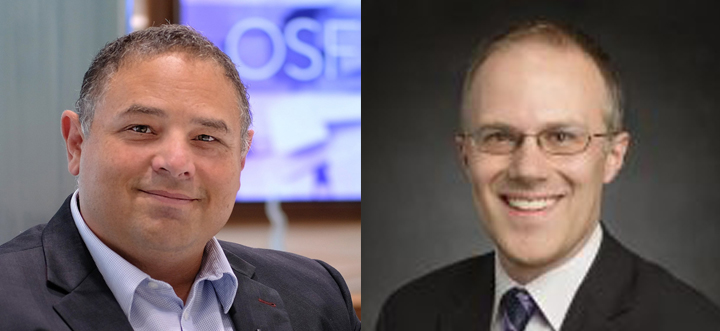
OSF HealthCare and the University of Illinois Chicago are hoping to take the lessons they’ve learned from working together to address disparities in rural communities to improve care in urban settings.
Leaders from the organizations say it’s a natural progression after OSF’s merger last year with Little Company of Mary in Evergreen Park.
OSF HealthCare will commit $1 million for each of the next five years to the new initiative, while UIC will match that gift with a mix of royalty income and in-kind contributions to provide about $2 million in annual grants to support multidisciplinary projects.
Health News Illinois spoke with leaders from both organizations, OSF HealthCare’s Chief Medical Officer for Innovation & Digital Health Dr. John Vozenilek and UIC Vice Chancellor for Innovation TJ Augustine, about the aim of the program, how the partnership came to be and future expansion.
Edited excerpts are below.
HNI: How will this program work and what are the separate organization’s roles?
Dr. John Vozenilek: Since 2017, we’ve partnered with the University of Illinois to understand health disparities, and our primary focus in those early days was on the rural context. Their work was extremely valuable to us as we were looking at our populations and considering new services that would provide better access and to improve patient care outcomes. What has emerged in the merger/acquisition with OSF Little Company of Mary, which is a hospital located on 95th Street in Evergreen Park, which is just adjacent to the Chicago border, it has the urban context. It has all of the disparities that one sees in the southwest side of Chicago. And UIC is a major leader in population health and social justice and in study and implementation for disparities. So it was a very natural transition from the long-standing relationship to begin to work together to combine funds to do translational work in that community. So what does that mean? OSF and the University of Illinois Chicago commit every year a significant amount of funds so that we will do important projects that will provide enhanced care, either through new models of care, new technologies, all kinds of things. And frankly, whatever the University of Illinois Chicago faculty and OSF agree to and conceive together will have traction in that community.
TJ Augustine: Community Health Advocacy Partnership Program is designed to bring together UIC researchers across all our different colleges with clinicians from OSF HealthCare to solve problems related to health disparities and improving wellness in urban environments. The way it will work is there’s funds that have been put into the program by both UIC and OSF, and those will be used to fund projects that bring these folks together, selected by a steering committee of representatives from both UIC and OSF. We’re hoping that these projects will be very good at bringing the results to impact patients very quickly, and a particularly important part of that is OSF’s Little Company of Mary Medical Center, which is located in Evergreen Park in Chicago, which we think will be a fantastic setting for deploying some of these opportunities as they’re developed by the faculty and physicians.
HNI: What types of projects will you be taking on?
JV: For example, we recognize that there’s a great deal of – even despite the fact that in the urban context transportation is less of an issue than in our rural context – there’s still significant transportation barriers in the city and in the near suburbs of the southwest side. There are other significant disparities as well … To be specific, we’re intending to expand the use of telehealth services, particularly to take care of patients who are disadvantaged. Mothers, new mothers in particular, they have on average 14 to 20 visits to primary care obstetrician/gynecologists before delivery. And we know very well that good primary care for the new mother is extremely important and useful and it leads to, oftentimes, a better birthing experience for mother, for child, for safety and for outcomes. So expanding access and the use of telehealth services can include: How do we digitally connect to new mothers? How do we maintain connections? Are there services that we can provide through telehealth? Are there services that we provide through community health workers? So these are people, boots on the ground who actually visit with and help new moms through their journey to deliver, et cetera. And how do we augment that experience? So what technologies do we give the community health worker to actually communicate with moms about all of the stresses and strains that occur with being a new mother?
TA: We’re going to launch our first call for proposals this fall. So we’ll be having projects that get started very, very soon. If I had to say what I think it will be, this partnership grew in many ways out of some earlier work between OSF and our Innovation Center at UIC. The Innovation Center, I think it was a great opportunity for OSF to get engaged because it brings together faculty and students from engineering, business, medicine, design and other disciplines into teams to help solve problems. So they’ve been working with OSF for some time.
Let me step back for just one second, OSF serves a largely rural community … But they’re very interested in how they deliver care to underserved individuals and in rural areas. And so really the start of the collaboration between UIC and OSF was looking at how do we take what OSF has learned about those rural communities and translate it to underserved urban communities? And I think what we’ve learned in those early projects are those communities are actually very similar in many ways, face many of the same challenges in being under-resourced from a healthcare standpoint. And the early projects that we did prior to the launch of this new partnership spoke to the fact that there’s a lot that we can, given our mutual strengths, do together to improve healthcare in Chicago and other urban settings.
HNI: How did this partnership between OSF and UIC come to be?
JV: It’s really the evolution of a very fruitful relationship where we took ideas from human-centered design from their divisions in population health and even their divisions in marketing, obviously their college of medicine, and other colleges and brought them together into multidisciplinary tasks. These teams would work on all kinds of things. We had software that was created as a template to help us to connect to community health workers, for example. Now this is all pre-COVID, of course. And with COVID, we saw this emergence, this incendiary reaction where all this good relationship and work was now put to this new purpose to help combat COVID. So with that, there was a strong recognition between both UIC and OSF, that this is a good and fruitful partnership, And that if it was going to really go to the next level, to really expand beyond the UIC Innovation Center, and to the full campus of UIC, that we’d have to make some money available for that. And so UIC and OSF are committing financial resources to build new teams and work on a diversity of projects that really affect patient care outcomes in southwest Chicago.
TA: OSF has worked for some time with the University of Illinois in Urbana-Champaign. That sort of started a relationship between OSF and our sister campus in Champaign. And one thing led to another that initiated the introduction to our Innovation Center at UIC. And it was those first conversations and projects around, ‘How can we translate what we’re doing at OSF around care in rural environments, how can we start to translate to thinking about urban environments?’ And I’ll say too, one thing I haven’t mentioned, at UIC we have a very deep integration with the communities on the west and south side of Chicago, both from a research standpoint and community engagement standpoint, but also from a healthcare standpoint through our hospital, UI Health, and the Mile Square (Health Center). And so because of that, I think OSF recognized UIC’s deep strength in urban healthcare. It was just a very obvious partnership I think on both sides as we got to know each other better through those early Innovation Center engagements.
HNI: Why the focus on the greater Chicago regions and other urban communities?
JV: Firstly, OSF’s experience with working with academic powerhouses like the University of Illinois starts from the Jump ARCHES program, where in Urbana-Champaign, the principal effect was to combine engineers and clinicians to solve problems in healthcare. We learned that this was very fruitful. It was particularly useful as we were exploring rural health technologies, internet, medical things, devices, data safety, et cetera. All kinds of really cool things happen there. Now, when you look at the urban context, and in particular the disparities that exist and are unique to the urban context, well, UIC’s strength is in that area. I mean, we’re talking about decades of investment in the faculty and the students and the programs and the centers that are funded at UIC that specifically address those types of urban conditions, with urban planning to pipelining, the new jobs, experiences, et cetera. We feel like we can have a significant impact for patient care outcomes if we look at this with expertise from UIC.
TA: The Chicago region and these urban communities are in our DNA at UIC. We serve the city of Chicago and surrounding areas from an education and health standpoint. That’s what we do. And for OSF, Little Company of Mary Medical Center in Evergreen Park was really their first foray into the Chicago metro region and into these more urban environments … I think that for them coming into the Chicago area, and given our expertise and the types of communities that they’ll be serving in Evergreen Park, there was an obvious synergy there for both of us.
HNI: What are the long-term goals here? Is this something that can expand elsewhere?
JV: What we have found is that this type of initiative has a little bit of a gravitational effect. And so actually we find community-based organizations, other academicians wanting to join the teams. So there’s sort of an aggregating effect. For example, we have faculty from Bradley University and (Illinois State University) working downstate in our Jump ARCHES program. Well, I would anticipate with the abundance of colleges, community colleges, and other community-based organizations that are thinking about these problems and solutions, that we would again create a little center of gravity and start to get some of that magnetism going for that community of service up in the Chicagoland area. So we think this will be a big deal.
But let me answer a little more directly … our goal is to really translate into real use into real communities. This is not an effort to spend money to study conditions. This is an action. These are action plans. This is prototypes put into action. What it is is really know-how, and the University of Illinois Chicago is all about developing know-how and translating it to good use. And so for both OSF and for UIC, we really expect to see some of the things that come out of this generalized for other purposes. Now, I mentioned to you before that UIC was a partner in prototyping a piece of software that helped us to direct community health workers pre-COVID. One example, when COVID did hit, the Illinois Department of Healthcare and Family Services funded us for a pandemic health worker program, and we developed that software to deploy those pandemic health workers. So here’s a great example of something that translated into good use at a critical time, and the fruitful partnership between UIC and OSF. So we hope that we don’t have another pandemic this year – or anytime during my lifetime – but frankly, that’s what happens when you have these innovators working together. As a challenge comes up and you have to pivot, you’re ready.
TA: I think that what we’re learning can certainly expand very broadly. The learnings from the projects that we find, number one, we want them to be very quickly impactful. The goal isn’t for this to be research that has an impact on someone’s lives in 20 to 30 years. The goal is to have this be impactful very quickly. Number two, we think it can be very translatable to other communities in urban settings around the country and the world for that matter. We do think that Evergreen Park and Little Company of Mary in the west side of Chicago, will be great testbeds for learning more about how we can provide better health outcomes for our patients.
HNI: How does this program fit into the overarching goal to transform healthcare delivery?
JV: I feel like I’m a one-trick pony on this whole thing about the software, but it’s just a great example. So post-pandemic and looking at how we’re transforming the care of patients within Medicaid enrollments. Like, we literally pivoted that software out of, well we still take care of COVID patients, but we now have a broader use as well to address the issues that are specific to Medicaid populations. So how do we connect with those patients, how can we get them to the federally qualified health centers or other community clinics to get primary care services? How do we then connect to them when they need more advanced services within our hospital construct? How do we work with our partners for specialty care? Some of this work happens at that layer that lives in a piece of software that lives above the electronic medical record. So again, UIC and OSF have combined to really look at that care transformation. Now, it’s one example. Other examples include devices that live in patients’ homes to give them advice. We had a whole project, for example, on loneliness and depression where we were addressing some issues with behavioral health. We have an initiative for mom and baby. We have another initiative that’s related to issues of health disparities, specifically around race and ethnicity. And all these programs of activity had been funded in flight in the past, and now need to go into prototype to solve problems going forward.
